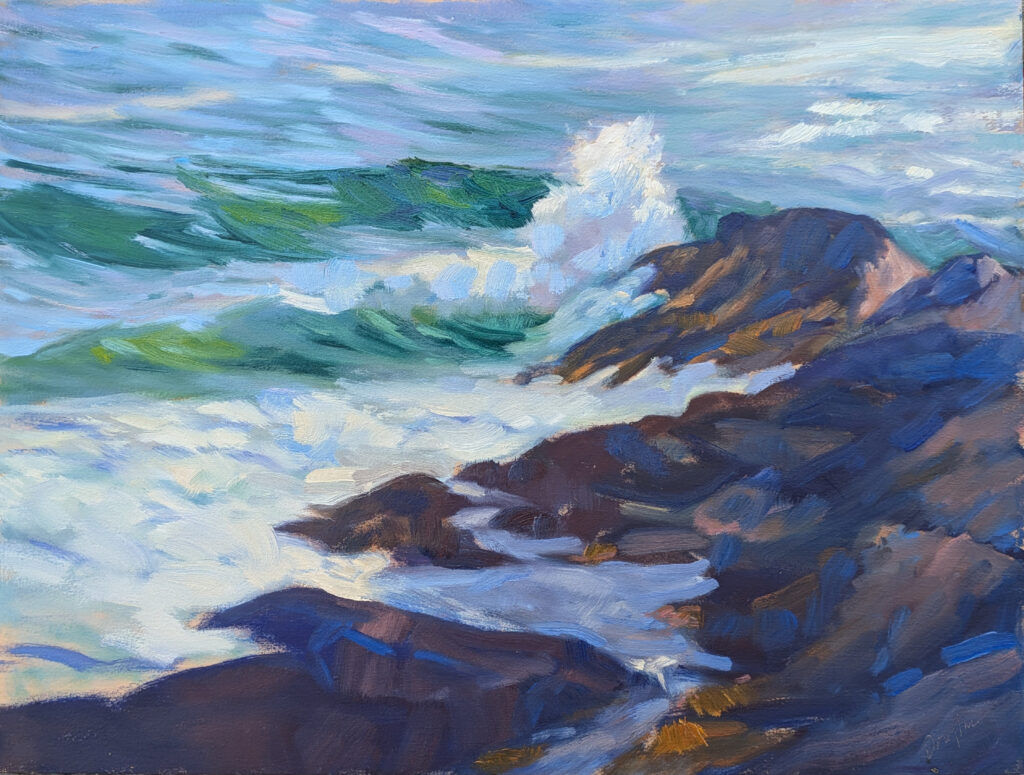
Plein air painting workshops? I’ve taught a few (gazillion). Like most good instructors, I’ll send you supply lists, clothing suggestions, and travel instructions before we set out. But there are intangibles that will help you have a better time.
Plan to be flexible. In March when I drove over the mountain to Sedona, AZ, the last thing I expected to see were inches of snow on the ground. But weird stuff happens. Weather, light and circumstances change. Adaptability is a great skill, and rapid change is what makes landscape painting both the most difficult and the most rewarding of all the painterly disciplines.
You can never plan for every eventuality—for example, my rental car from Phoenix had neither snow tires nor a snow brush. But if you set out with a broad range of stuff you’re likely to need, more or less you’ll have enough stuff to make a stab at almost everything. And your teacher or peers will have whatever you need to fill in the rest.
Last year at Sea & Sky at Schoodic we knew we had a Nor’easter bearing down on us on the last day. We coped by preloading extra painting time earlier in the week. Everyone got lots of painting and learning in. We had the added bonus of watching a wicked storm crossing Schoodic Point, although there was no paint sticking to paper or canvas in that weather. Then there was the time Cassie Sano saw a bear.
Embrace imperfection: If you’ve ever wanted to learn to paint loose, plein air is your best teacher. You simply can’t fuss over the details in the field, especially in half-day exercises.
I tell my students they’re not in class to make masterpieces but to learn. Ironically, that’s when they often do their best work.
Ask questions: This is a hard one for me, because I’m not one for group sharing, myself. But instructors are there to help, and your peers often have valuable insights. Ask your teacher lots of questions. I’m usually grateful for them, because they reveal places where my explanations have been fuzzy or weak.
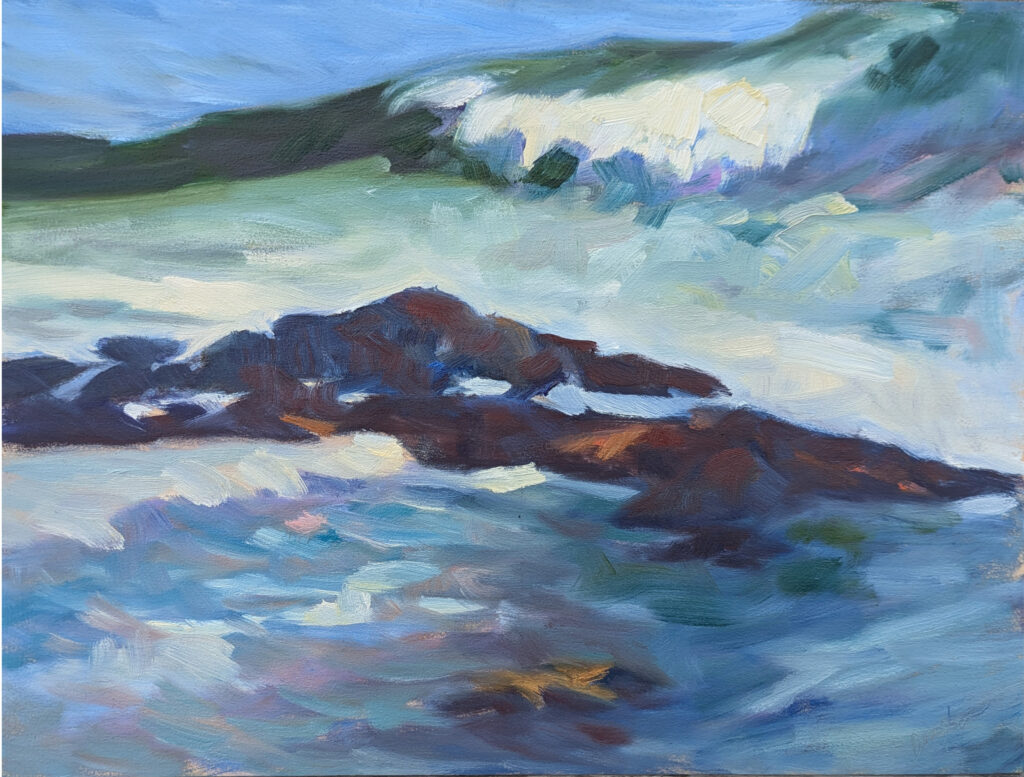
Why should you take a plein air workshop?
Painting outdoors forces artists to observe light, color and form more carefully and accurately than working from photos. It’s far harder, and it teaches you to edit on the fly, so when you do work in the studio you aren’t slavishly copying your reference pictures.
Plein air challenges you to simplify and focus on essentials—composition, light, and value—leading to noticeable skill improvement.
Natural surroundings also spark fresh ideas and emotional responses that don’t happen in the studio. There are people joined by a common reverence towards nature, who are (overwhelmingly, in my experience) supportive, intelligent, and helpful.
Painting in public can be intimidating at first, but it builds confidence in your process and helps you become more resilient as an artist.
Lastly, we teach workshops in places that are beautiful—in my case, Maine, the Berkshires and Sedona—and wonderful to paint.
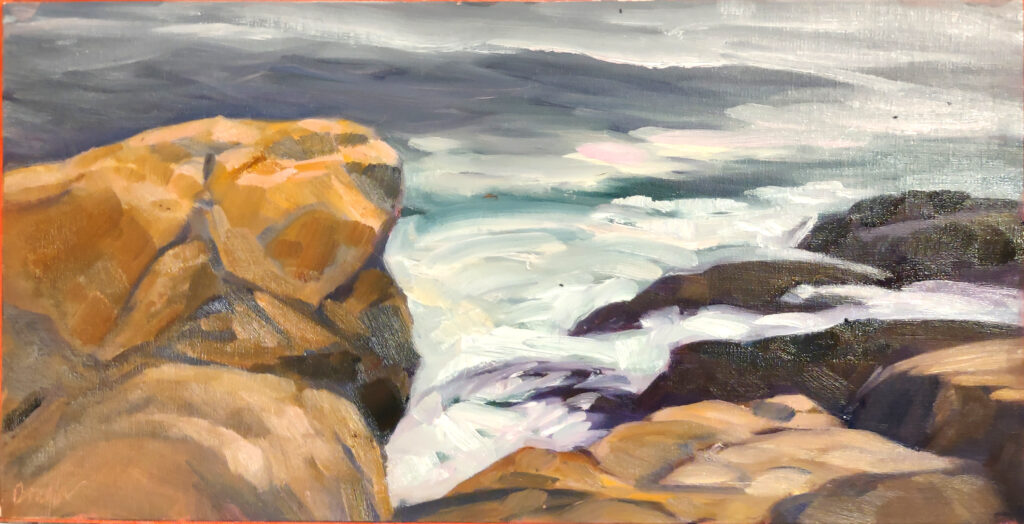
And sometimes there’s profit in it
Mark Gale sent me this over the weekend: “As I was prepping paintings for a pop-up market, I found myself including a couple from a painting series I took with Carol Douglas. Then I realized I have sold paintings from in-person workshops and other Zoom series with Carol. Yes, she will make you a better painter. She also has an uncanny ability to deliver intangible extras. Students from across the country meet, form relationships and stay in touch. Carol’s alums have an enduring community. And sometimes, that piece you thought was just a class exercise, ends up in the hands of a happy customer.”
Reserve your spot now for a workshop in 2025:
- Advanced Plein Air Painting, Rockport, ME, July 7-11, 2025.
- Sea and Sky at Acadia National Park, August 3-8, 2025.
- Find Your Authentic Voice in Plein Air, Berkshires, MA, August 11-15, 2025.
- Immersive In-Person Fall Workshop, Rockport, ME, October 6-10, 2025.
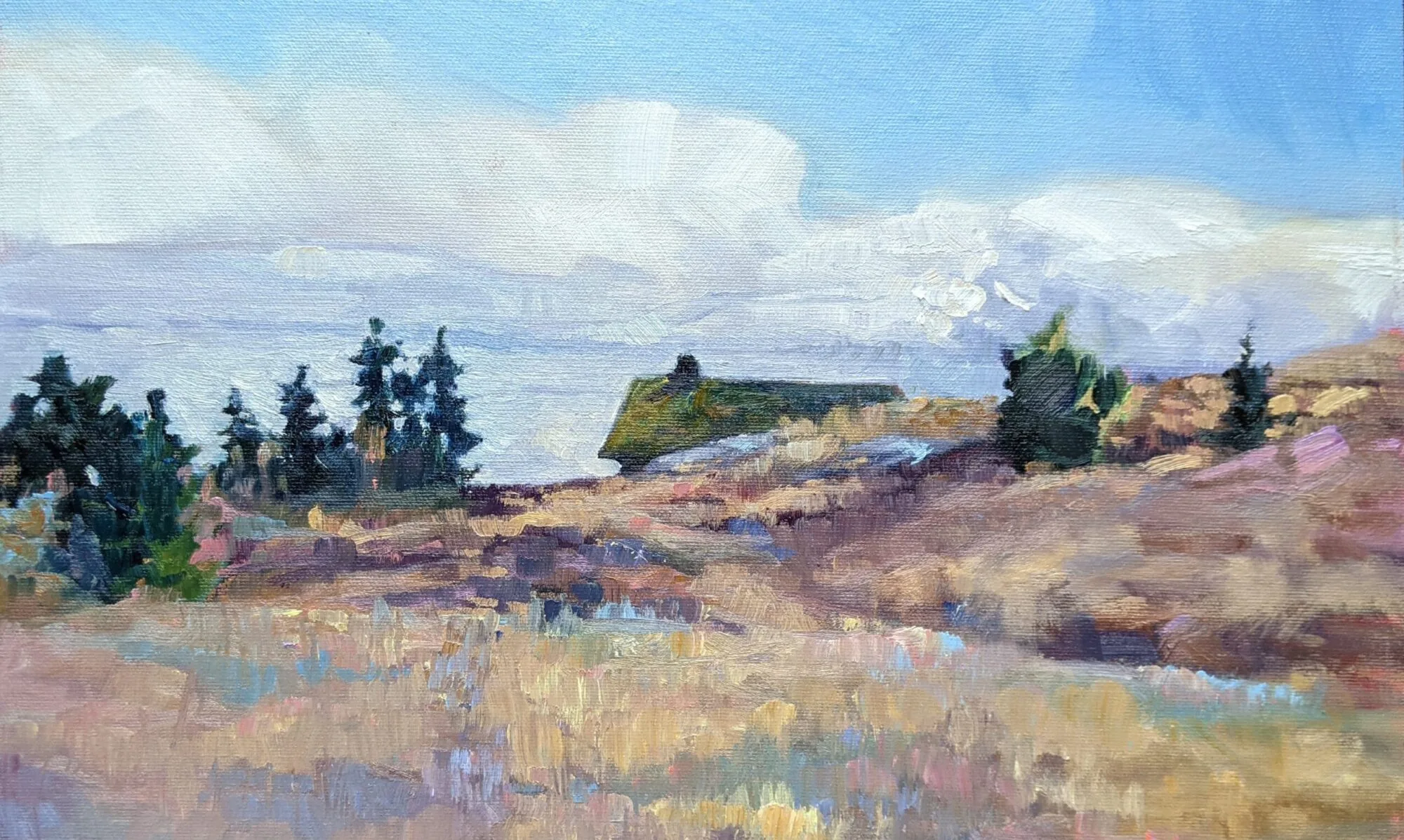
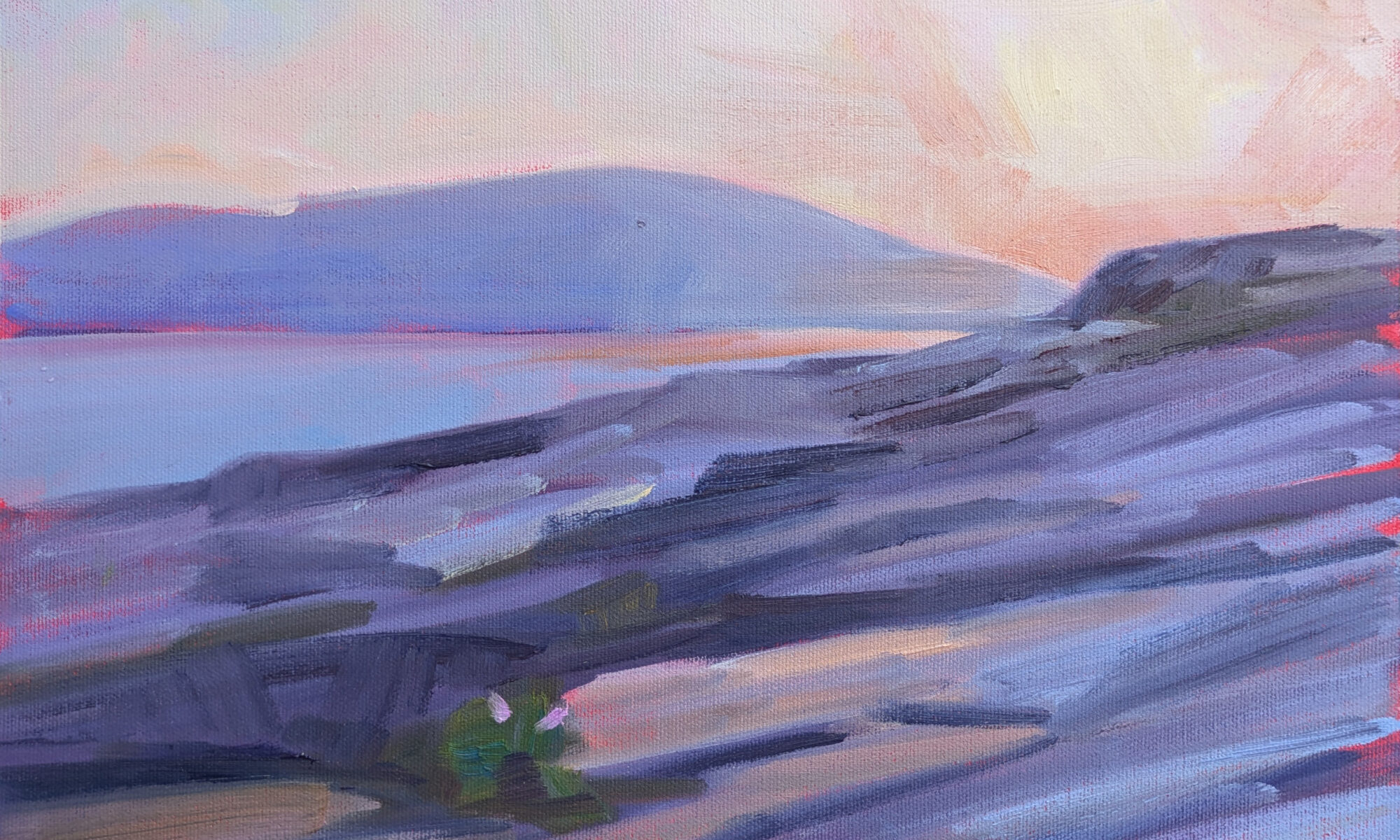
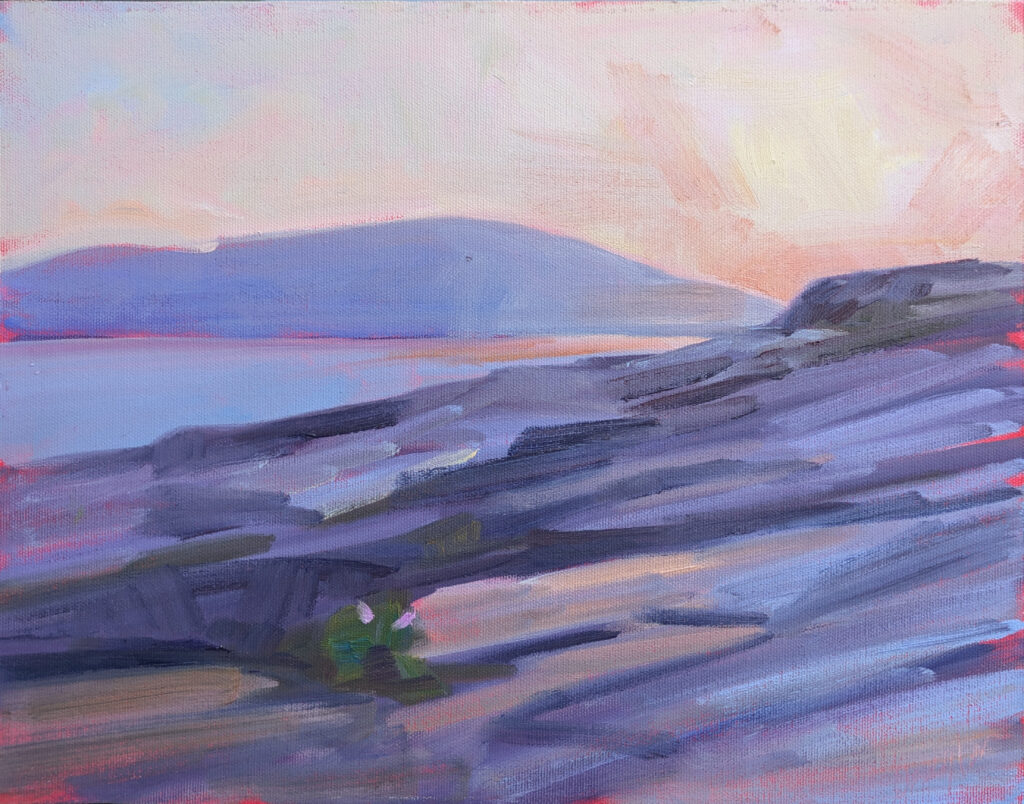
The joys of plein Just finished theusualwatercolor/sketchbook/journaling class for the Road Scholar program in Yosemite, and My am full of admiration for my students who weathered everything from hot (for California) sunny days, rain, wind, overcast, and hail. We saw bears, deer, and a variety of smaller wildlife although none held still long enough for us to paint them. One day, coming out of Yosemite Valley through the tunnel at Tunnel View, there was hail, wind, and very stormy conditions on the valley side; but once out of the tunnel, it was dry, warm, and sunny! (I think my PA experience is why I am now Queen of the Overpackers.) On the plus side, another day at Valley View, we stumbled on a pair of private chefs out in the wild prepping food. Apparently they go into the park once a week or so to do this, share their creations with the bystanders and then ask for votes on which creation was the most delicious, Instagramming all of their results! You really never do know what you’re going to find when you’re out PA painting.
Why haven’t I ever yet run across wild chefs giving away their creations?
One of my most entertaining plein air experiences, of course, was the crystal-ley lines-meaning of life people who kept wandering into our painting space when we were together on Upper Red Rock Loop Road.
Carol, at the pop-up I mentioned in the comment above, I sold that little watercolor study of Yellowstone I did for class. It was a nice piece that struck a chord with a woman who knew the spot. As you know, I have also been playing with prints. Another person bought an 12 X 16 print of my Delicate Arch painting from your previous class. It would have been nice to see her snag the original, but it did prove my point (to myself) that the much more expensive original might help sell a much cheaper print to someone who was probably not going to buy the original oil anyway. Thanks for being a wonderful teacher and friend!
As I always tell you guys, it cuts both ways–it takes great students to make a great class. I’m so honored to have so many successful painters among my students, working and selling their work.